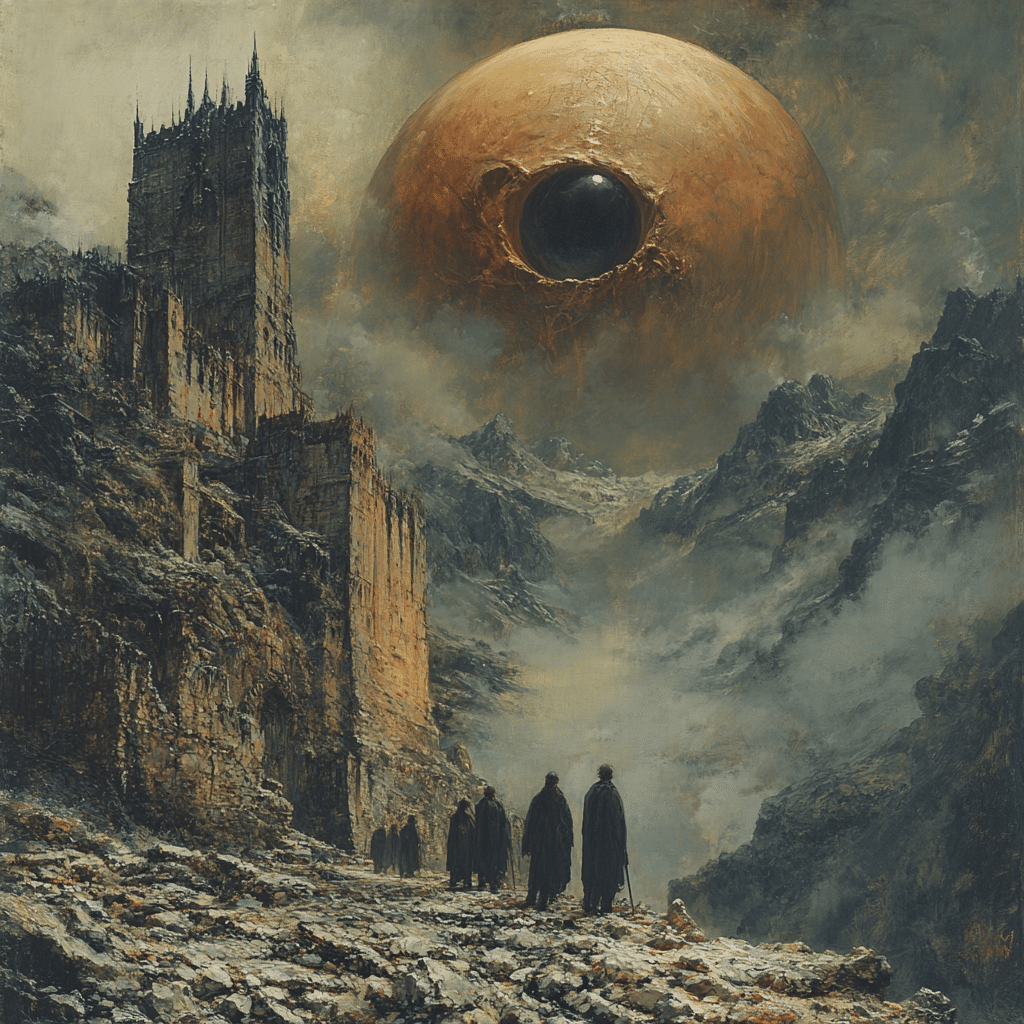Amon Goeth: A Symbol of Nazi Brutality
Amon Goeth, often referred to as the “Nazi Monster Commandant,” became one of the most infamous figures of the Holocaust. This article explores his role in World War II, his actions, and the lasting impact of his brutal legacy. His name is etched in history books as a representation of the sheer inhumanity that marked the era.
The Rise of Amon Goeth
Amon Goeth’s ascent within the Nazi ranks was propelled by his unrelenting ambition and ferocious brutality. Born in Vienna on December 11, 1908, Goeth joined the Austrian branch of the Nazi Party in the early 1930s. By 1942, his steadfast loyalty to the Nazi ideology and his ruthless efficiency catapulted him to a high-ranking position within the SS.
Goeth’s rise exemplifies the Nazi regime’s penchant for individuals ready to enforce their polices using extreme measures. As the commandant of the Kraków-Płaszów concentration camp, his savagery would soon become emblematic of the Holocaust’s monstrous cruelty.

| Aspect | Information |
|---|---|
| Full Name | Amon Leopold Goeth |
| Born | December 11, 1908, Vienna, Austria |
| Died | September 13, 1946, Krakow, Poland |
| Cause of Death | Execution by hanging |
| Historical Role | Commandant of Kraków-Płaszów concentration camp |
| Affiliation | Nazi Party |
| Rank | SS-Hauptsturmführer (equivalent to Captain) |
| Crimes | War crimes, crimes against humanity, including mass murder and brutal treatment of Jews |
| Portrayal in Film | Played by Ralph Fiennes in “Schindler’s List” (1993) |
| Character Description | Depicted as a sadistic antagonist, devoid of compassion, who treats Jews as sub-humans |
| Notable Film Scenes | – Attempts to seduce his Jewish maid, Helen Hirsch |
| – Savagely beats Helen when she shows no reaction to his advances | |
| Historical End | Executed in Krakow post-World War II after being found guilty of his wartime atrocities |
| Last Words | Reportedly gave an unrepentant “Heil Hitler” before being hanged |
Płaszów Concentration Camp: Amon Goeth’s Reign of Terror
In 1943, Goeth was appointed commandant of the Kraków-Płaszów concentration camp. Under his command, Płaszów morphed from a labor camp into a site of gruesome atrocities. Goeth wielded power with an iron fist, instilling terror in prisoners through random executions, brutal punishments, and indiscriminate killings.
The commandant’s pervasive cruelty became legendary, with firsthand accounts describing daily acts of violence and murder. His notorious practice of shooting prisoners from the balcony of his villa is seared into the memories of Holocaust survivors. The transformation of the camp under his reign involved unimaginable suffering, contributing to the haunting tales of brutality that echo through history.
Amon Goeth’s Crimes: Documented Horror and Witness Accounts
The litany of Goeth’s crimes includes mass executions, inhumane working conditions, and overwhelming psychological terror. While Nazi documentation provides a chilling record of his orders and the consequent deaths, firsthand testimonies of camp survivors offer a haunting, personal perspective on the extent of his depravity.
Survivors recount harrowing stories of Goeth’s merciless shootings, his use of savage dogs on prisoners, and his overarching indifference to human life. These heart-wrenching accounts were pivotal in his trial and eventual conviction for war crimes. These documented horrors serve as grim reminders of what unchecked power and racial hatred can lead to, mirroring human travesties comparable to a house flooded with overwhelming despair.

The Capture and Trial of Amon Goeth
In 1944, as the Allied forces advanced, the Nazi regime began evacuating many concentration camps. Goeth was initially arrested by German authorities for corruption but was soon captured by the U.S. Army. His arrest marked the beginning of his long road to justice.
Goeth’s trial in 1945 became a significant post-war effort to hold Nazi criminals accountable. Placed in the dock before the Supreme National Tribunal of Poland, Goeth faced charges for the murders of tens of thousands of people. Despite his attempts to deflect blame, the court found him unrepentant and guilty. On September 13, 1946, he was executed by hanging, meeting an end befitting his cinematic depiction, giving an unrepentant “Heil Hitler” as his last words.
Portrayal in Media and Literature
Amon Goeth’s notoriety endures in contemporary media and literature. One of the most significant portrayals of Goeth is by Ralph Fiennes in the critically acclaimed film “Schindler’s List.” Fiennes’ chilling performance embodied the historical horrors of Goeth’s actions and brought his atrocities to a broader audience. Particularly striking was Fiennes’ portrayal of Goeth’s twisted relationship with his Jewish maid, Helen Hirsch. Goeth lusted after Hirsch, and when his advances were met with no reaction, he turned his rage towards her, beat her savagely, and accused her of tempting him.
In literature, works like John Cornwell’s “Hitler’s Pope” and “The House on Garibaldi Street” by Isser Harel delve into various aspects of Goeth’s life and his time in power. These portrayals contribute significantly to public awareness and historical discourse, ensuring that the memories of victims are preserved for future generations.
Lessons from Amon Goeth’s Legacy
Amon Goeth’s legacy serves as a chilling reminder of the depths of cruelty humanity can reach when driven by unchecked power and racial hatred. The abhorrent acts he committed underline the critical need for vigilance against tyranny and bigotry. Education about the Holocaust plays a vital role in preventing the recurrence of such atrocities.
Goeth’s history teaches humanity about the importance of resilience in the face of evil. The courage shown by survivors and the post-war justice that brought perpetrators like Goeth to account provide hope and a path to redemption even in the aftermath of horror. This resonates deeply as we consider those navigating life’s adversities, akin to examining the Ravens rb depth chart while seeking resilience and hope amidst challenges.
As we reflect on Amon Goeth’s legacy, we acknowledge the indelible impact of his actions on history. They serve as an enduring call to remember and a commitment to ensure that such atrocities are never repeated, making it clear the potential ruinous path one man’s evil can carve through time.
By understanding and disseminating the full scope of Goeth’s brutal reign, we contribute to a more informed and compassionate society. This story reminds us of the fragility of human rights and the dire consequences when we neglect to defend them.
In conclusion, understanding historical atrocities through figures like Amon Goeth underscores our shared responsibility to foster tolerance and remembrance. These lessons are pivotal not just for historical insight but for guiding modern society’s moral compass, ensuring history does not repeat itself.
Amon Goeth: The Nazi Monster Commandant
The Dark Side of Amon Goeth
Amon Goeth, known as the “Butcher of Płaszów,” stands as one of the most notorious figures of World War II. Indeed, his horrifying actions as the commandant of the Płaszów concentration camp in Poland left an indelible mark on history. His brutality wasn’t just limited to the prisoners; he even terrorized his own subordinates. In a chilling anecdote, Goeth reportedly demanded that his wedding ring, or Anillo de Matrimonio, always be polished and ready, highlighting his obsession with power and control.
Odd Connections and Little-Known Facts
Although his atrocities are well-documented, tidbits about his life often get overshadowed. Amon Goeth’s interest in certain substances, for example, brings to light another aspect of his character. While there’s no direct proof, it’s intriguing to ponder whether he was familiar with substances related to psychedelics, such as those that might make one wonder if Does Shrooms show up in a drug test would’ve been a question back then. Imagine the dark corridors of history illuminated by such odd intersections.
Connections to Unexpected Places
In an even more surprising turn, did you know that some Nazis had peculiar social connections that included seemingly unrelated locations? Interestingly, Goeth himself might have come across names like Anderson Michel in records, given the global nature of wartime networks. It’s a startling thought, isn’t it? Alternatively, Goeth’s influence even extended beyond Europe. Groups like Friends springfield mo have devoted time to discussing historical anti-Semitism and its ripples across continents, touching upon figures like Goeth.
More Than Just a Commandant
Amon Goeth’s life, awash with contradictions and horror, remains a tangled web of dark tales. Even as we explore these shadows, we occasionally find bright, albeit scattered, nodes of human connection and unexpected links to everyday questions like E T O H meaning, a term relevant to alcohol and one Goeth surely understood, given his penchant for indulgence.
By examining these tidbits, we gain a fuller, albeit more chilling, understanding of Amon Goeth. Figures from the annals of history like Andriy Shevchenko may seem distant from such grim narratives, but they remind us of the diverse fragments that constitute our shared story.

Why did Amon Goeth hit Helen?
Amon Goeth hit Helen because she didn’t show any reaction when he tried to seduce her. He got angry, blamed her for tempting him, called her names, and then beat her savagely.
Who was hanged at the end of Schindler’s List?
Amon Goeth was hanged at the end of Schindler’s List. After the war, he was executed in Krakow, and before being hanged, he gave an unrepentant “Heil Hitler.”
Was Amon Goeth in Schindler’s List?
Yes, Amon Goeth is a character in Schindler’s List. He is portrayed as the brutal commandant of the Kraków-Płaszów concentration camp and serves as the film’s main antagonist.
What happened to Helen Hirsch in Schindler’s List?
In Schindler’s List, Helen Hirsch is portrayed as a Jewish maid who is abused by Amon Goeth but ultimately survives the horrors of the concentration camp.
Was Amon Goeth a good person?
Amon Goeth was not a good person. He was a high-ranking officer in the Nazi Party and the commandant of the Kraków-Płaszów concentration camp, known for his cruelty and inhuman treatment of Jews.
Did Amon Goeth feel remorse?
Amon Goeth did not feel remorse. Even at the time of his execution, he remained unrepentant, uttering “Heil Hitler” before being hanged.
Is the last scene in Schindler’s List real?
The last scene in Schindler’s List, where Holocaust survivors and actors place stones on Schindler’s grave in Israel, is real and serves as a tribute to his memory.
Who was the girl that Schindler kissed?
The girl that Schindler kissed is related to one of his Jewish workers. It’s a symbolic gesture showing his affection and respect for the people he saved.
What happens to the girl in the red coat in Schindler’s List?
The girl in the red coat in Schindler’s List is ultimately shown among the piles of bodies, symbolizing the innocent lives lost during the Holocaust.
Was Amon Goeth handsome?
Ralph Fiennes, who portrayed Amon Goeth in Schindler’s List, is considered handsome by many. His darkly charismatic role added complexity to his otherwise villainous character.
Who was the girl shot in Schindler’s List?
The girl shot in Schindler’s List is just one of many innocent victims of the Holocaust, representing the countless Jewish lives taken by the Nazis.
What does the SS stand for in Schindler’s List?
SS in Schindler’s List stands for “Schutzstaffel,” the paramilitary organization under Adolf Hitler and the Nazi Party, responsible for many of the regime’s atrocities.
Did Amon Goeth love Helen in real life?
There’s no evidence to suggest that Amon Goeth loved Helen Hirsch in real life. His treatment of her was abusive and rooted in his perverse views and power dynamics.
Why does Schindler tell Helen that he’s certain Goeth won’t shoot her?
Schindler tells Helen he’s certain Goeth won’t shoot her to provide some comfort and hope. He knew Goeth’s unpredictable nature made him dangerous, but this reassurance is a survival strategy.
Who is standing at the end of Schindler’s List?
At the end of Schindler’s List, Holocaust survivors and actors who portrayed them gather to pay respects to Oskar Schindler by placing stones on his grave in Israel.



